Results 541 to 550 of 12094
Thread: Anandtech News
-
06-03-11, 02:00 AM #541
Anandtech: Hands on and Benchmarks of two MSM8x60 Phones - HTC Sensation 4G and HTC E
Yesterday evening I met up with HTC, who let me take a quick look at a number of upcoming unreleased phones, including the HTC Sensation 4G and HTC EVO 3D. Naturally, the first thing I did was sit down and run some benchmarks during our limited time with the phones, and get an overall feel for the two. These two phones are both based on Qualcomm's MSM8x60 SoC which consists of two 1.2 GHz scorpion cores, and Adreno 220 graphics. We also spent a little bit of time with the HTC ChaCha and HTC Salsa.
Read on for some benchmark goodness and our thoughts about these four devices.
More...
-
06-03-11, 07:10 PM #542
Anandtech: Computex 2011: Danshui Bay Concept Motherboard
ASUS have been coming to Computex to sensationalize and dazzle the press with concepts for years, and this year is no different, irregardless if anything is technically feasible or not. Last year, we saw the ASUS Immensity motherboard – an X58 featuring a 5450-type integrated GPU and a Lucid Hydra chip to combine any discrete GPU combination on board. This year takes a turn for the surreal.
Introducing the Danshui Bay concept:
Simply put, ASUS are wanting to combine two chipsets on one motherboard – the X58 socket 1366, and the X79 socket 2011. If we completely disregard the technical challenges this faces, it provides the interesting idea of something that might be possible in the future: You want to upgrade your machine to the latest chipset and processor. Rather than throw your old processor away or sell it on, you could buy a motherboard that lets you harness the power of the old processor and a new processor together, in some form of chimerism.
As for the technical challenges in producing such a product, I could reel off a whole list. For a start, chipsets are not designed to talk to each other. Processors need dual QPI links to talk to each other of the same model – how that would work with different socket processors with different caches and core counts is also a mystery, as with 1366 you would need an appropriate Xeon. With two chipsets, you’ll have to have a different set of memory for each processor, and possibly getting a mismatch there based on dual/tri/quad channel memory. Each processor requires its power and a set of PCIe each – unless you disregard the PCIe of one of the chipsets but then you would have to have at least the processor of the other socket in order to run a discrete GPU. The same goes with SATA ports, I/O connectors, USB headers, and so on.
Obviously, this board presented is a mockup – merely bits and pieces put together. It’s showing sixteen SATA 3 Gbps and six SATA 6 Gbps for a start, as well as no significant power delivery and an obscene form factor. ASUS only want to know that if there was a demand for such a product, despite the technical limitations.
{gallery 1160}
More...
-
06-03-11, 07:50 PM #543
Anandtech: Computex 2011: The ROG Releases
This week at Computex, along with the ASUS announcement of the Padfone, the UX series, and the $199 MeeGo netbook, we also have had a glimpse into what the Republic of Gamers line will have for enthusiasts and overclockers very shortly, including the Danshui Bay concept reported on earlier.
One of the more interesting products on display was the G74SX 3D which was previewed at CeBIT also – a 3D capable gaming laptop that doesn’t require glasses. It uses a CMOS camera and an NVIDIA 560M under the hood, combined with an advanced detection algorithm to find where the user is, to change the 3D perspective accordingly.
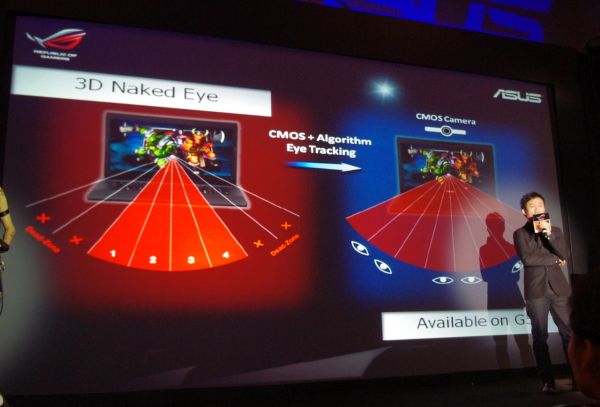
ASUS were keen to point out the new fan design technology utilising dual fans pulling air from the middle of the bottom of the laptop to the back. It was also emphasised that this improves sound quality as there is no fan disturbance of noise from the sides.
{gallery 1161}
The other interesting product due for release was the ASUS ROG Matrix GPU - a new ASUS designed GTX 580 aimed at performance. Using an overclocked 580 chip, the PCB itself has three buttons on the card to adjust the voltage and the fan speed to 100% - any MHz overclocking has to be done in the BIOS however. In case all fails, there is a safe-mode button on the rear to revert to the card’s default settings.
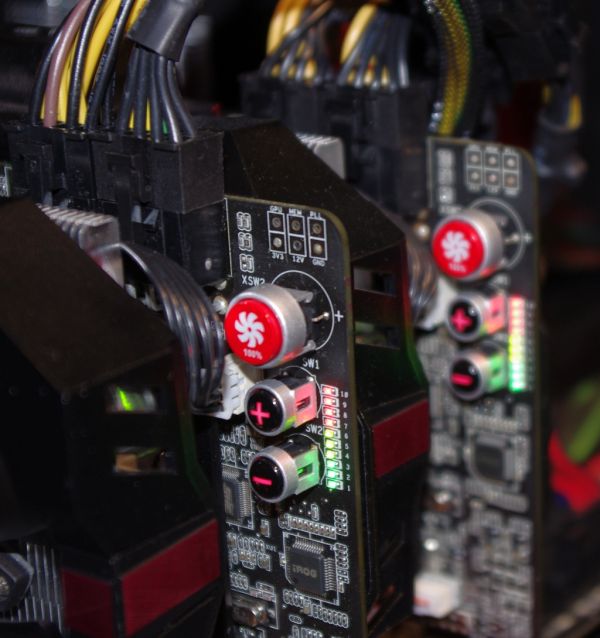
The odd thing about the GTX580 is that at the ASUS booth, which had a live demonstration, in order to promote the onboard voltage tweaking settings, had a display showing that the voltage can be adjusted from a +50 mV offset, to a 1250 mV offset. Bearing in mind that the chip at default runs around 1 V, adding a +1250 mV offset gives 2.25 V – this is around 0.5 V more than extreme overclockers use.
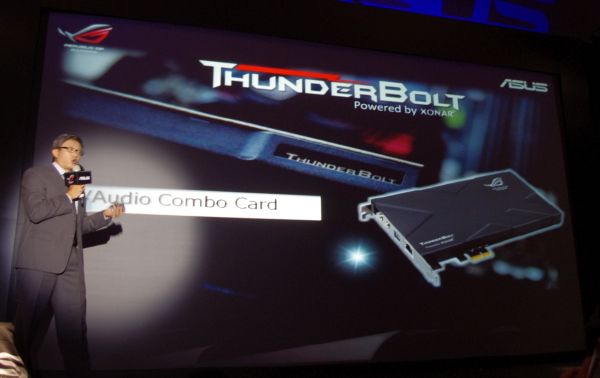
In terms of design features for the gaming segment for motherboards, supposedly including the Rampage Extreme III Black Edition on show, ASUS were keen to stress the use of Intel controllers for networking, onboard audio in the form of the SupremeFX Fi-2 supporting EAX Advanced HD 5.0 and THX TruStudio Pro, but also what ASUS calls its Thunderbolt card.
The Thunderbolt card is an ASUS solution utilising Xonar’s experience in sound and Bigfoot’s Killer NIC in the form of a PCIe 1x card, despite having the previously mentioned features on the motherboard. Thus when you purchase a Thunderbolt branded product, you get theoption of using either, but end up paying for both.
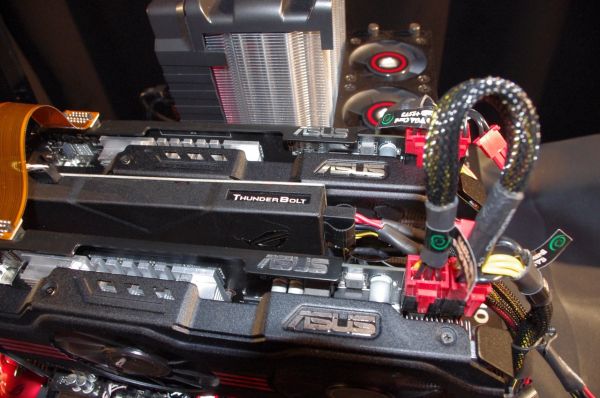
The card uses the Bigfoot Killer NIC and software to help prioritize traffic from various applications (read: games) over other network traffic, while the built in headphone amplifiers and software tools help customize the gaming sound experience.
As always with this type of announcement, there’s rarely mention of price or release date – however at the ASUS booth, I was informed to expect the ROG Matrix 580 at the end of June.
More...
-
06-05-11, 11:10 PM #544
Anandtech: Toshiba Tecra R850: Business Class on a Budget
Toshiba won't mind if we say that their previous business class notebooks looked...kind of cheap. They were bulky and unattractive, largely feeling like consumer notebooks with matte instead of glossy plastic. Yet when we visited with Toshiba to talk about their Tecra refresh, we were impressed, and Toshiba's reps were only too happy to put the new Tecras next to the old ones to demonstrate the stunning new weight loss plan the notebooks were put on. And the best part? While the Tecras have gotten a healthy refresh, their prices remain remarkably affordable. Is the 15.6" Tecra R850 the notebook you've been looking for?

More...
-
06-06-11, 03:20 PM #545
Anandtech: WWDC 2011: OS X 10.7 Lion
Apple kicked of its Worldwide Developers conference this year with a keynote meant to showcase three of its biggest software undertakings at the moment: Mac OS X, iOS, and iCloud, the latter of which being its new cloud computing service.

Apple covered there new products from oldest to newest, which means that Mac OS X 10.7 was first on the chopping block. Apple's Phil Schiller and Craig Federighi took the stage to demonstrate ten of Lion's purported 250 new features (don't get too excited - things like desktop wallpapers have been counted as new features in the past, so Apple is likely being very generous with its counting here).
I'm going to take you down that list, but because most of it is stuff we've seen before in one form or another in other Apple demos of Lion, I want to front-load the piece with pricing and release information for Lion, since those are the most interesting new facts we got out of Apple today.
Price and Release Date
First: Lion will go for $29, the same price as the current Snow Leopard upgrade, and it will release at some point in July. Pre-Snow Leopard upgrades of the OS were typically priced at $129, with a 5-license Family Pack being available for $199. Next, Lion will be made available only on the Mac App Store as a ~4GB download - there is, as of this writing, no plan on Apple's part to release Lion on a physical disc that you can buy. That $29 App Store purchase is good for all Macs you have registered to your App Store account.
There are, of course, positive aspects and negative aspects to this approach, and there's other stuff that we just don't know: how will this impact businesses and schools who would like to volume-license the OS? How will clean installs be handled, in the case of a crashed hard drive or otherwise trashed OS? What about people with slow or unreliable Internet connections? We'll just have to wait and see.
System Requirements and OS X Server
The first one: System Requirements. This is one of the many areas in which Microsoft and Apple differ in their OS strategy - while Microsoft makes certain recommendations about the type of PC that will give you a good Windows experience, there are very few configurations that will actually prevent the operating system from installing. Apple, on the other hand, prefers to drop support entirely for Macs that it feels are insufficient to run OS X. This goes all the way back to the 10.4 days, when Macs without FireWire were no longer eligible for OS X upgrades.
This time around, the OS will drop support for the 32-bit Core Solo and Core Duo chips shipped with the first Intel Macs in 2006. This is Apple's latest baby step toward a world where Macs use a 64-bit OS, 64-bit programs, and 64-bit drivers by default. They've been pushing this issue slowly but surely for most of OS X's development - indeed, recent Mac Pros and MacBook Pros are already set to use Snow Leopard's 64-bit kernel right out of the box, though most models still default to the 32-bit kernel.
Some have had success hacking the developer releases to run on these processors, but since these computers can only support up to 2GB of RAM, since they were only sold for a few months before being superceded by Core 2 Duo Macs, and since there are already 64-bit only apps in the App Store that won’t install on these older Macs under Snow Leopard, the decision to drop official support for these models is probably a prudent one that shouldn’t impact a huge portion of the OS X userbase (though expect those who it does impact to be very vocal about it).
Lastly, a brief word about Mac OS X Server: Back in the day, Apple's server OS either came preinstalled on the (now discontinued) XServe, or as a separate $999 unlimited-client package installable on any desktop Mac. Then came the $999 Mac Mini Server, which axed the Mini's optical drive in favor of a second internal hard drive - this drove the unlimited-client server software's price down to its current level of $499. In Lion, OS X Server is now an App Store download instead of a separate OS. There's no word on how much it will cost, but if other App Store price cuts on things like Aperture and Apple Remote Desktop are any indication, we should expect a healthy cut.
Now, on to Lion's new features!
More...
-
06-06-11, 04:50 PM #546
Anandtech: WWDC 2011: iOS 5
After giving us a look at OS X 10.7 Lion in its WWDC keynote today, Apple turned to what is seen as the more important of its OS platforms at the moment: iOS.
More...
-
06-06-11, 05:50 PM #547
Anandtech: WWDC 2011: iCloud
We've already talked about Lion and iOS 5, Apple's other WWDC topics, and both look like worthwhile extensions of existing products, but Apple squeezed its most interesting announcement in at the end of the keynote: iCloud, its long-anticipated cloud computing service.
More...
-
06-06-11, 11:10 PM #548
Anandtech: Moneual Sonamu G100: Back to the Future
One of the joys of doing case reviews is getting to see more exotic designs from smaller vendors looking to make their mark. Some of them are like ASRock has traditionally been with desktop motherboards, innovating in new (and often strange) ways and adding features or going after markets bigger names don't traditionally gun for. Such is the case with Moneual's Sonamu G100, an enclosure designed specifically to reduce standby power consumption of not just your desktop, but reduce or even eliminate the power consumption of the peripherals plugged into it. That's the theory at least, but how does it work out in practice?

More...
-
06-07-11, 04:10 AM #549
Anandtech: Computex 2011: Silent and Single Slot GPUs
In general, we see a trend in the market preference for quieter, smaller, cheaper, and more powerful GPUs. In reality, we might see two or three of these features in a product, at the expense of the other(s). I took the opportunity to visit as many vendors as my time allowed in Computex to find GPUs which could potentially fit into these categories.
On the NVIDIA side of things, Zotac where showing two silent models. The first is actually a PCI card, rather than PCIe – a GT 430 with 512 MB DDR3 memory on a 128-bit bus, running at 700 MHz core speed and1600 MHz memory. A purely silent card, it has a single slot design and supports DVI-I, HDMI, and VGA. It’s interesting to see a PCI card on sale – they have their uses mainly in industrial applications, but due to the PCI specifications there’s a bandwidth limitation which may hinder any significantly faster GPU.
The Zotac 520 ZONE Edition, with 48 CUDA cores and 1 GB DDR3 memory on a 64-bit bus, runs at 810 MHz with 1600 MHz memory. Again, this is a silent card, but a dual slot solution, supporting DVI-I and mini-HDMI.
Sparkle, apart from competing with Gigabyte and ASUS on SKU naming complexity, had three silent cards on display – a GTS 450 (SXS4501024DSSNMP), a GT 440 (SXT4401024S3LNMP) and a GT 520 (SXT5201024S3LNMP). The GTS 450 version supports two DVI ports and a mini-HDMI, whereas the other two give the standard VGA, HDMI, and DVI connectors. The GT 440 is a single slot solution, and all three have 1GB memory.
In terms of raw power in the veil of silence, we have to look at the AMD side of things and Powercolor, who have wrapped a HD6850 (yes, you read that right) in a passive heatsink using 5 heatpipes – this thing is massive:
The issue that probably bugs me the most about this card is I can see people using two in Crossfire. In order to shift that much heat, the case will require sufficient cooling – i.e. fans, and thus defeat the point of silent running.
Powercolor also had two more sensible passive solutions on show: a HD6670 and HD6570.
In a similar vein, over at the AMD booth, they had selected passive cards from various manufacturers – an ASUS EAH6670, a Gigabyte HD6770 (GV-R677SL-1GD), a HIS 6570 Silence and an XFX HD5670 (HD-567X-ZNH).

{gallery 1164}
Even though there is a distinct trend to produce graphics cards with dual slot coolers, it does pique my interest when a manufacturer has a single slot solution to what is typically a dual slot answer. This is often at the expense of length, fan noise, and cost of heatsink materials, but in terms of performance per unit volume, a good single slot GPU can sometimes be the answer.
So enter the Powercolor HD6850 Single Slot Edition. Again, you read that right – a single slot 6850. This card isn’t significantly longer than the standard 6850 from looks, put I’d wager that the fan must work hard to push air through when the card is working at a full load.
On the professional side of things, Sapphire had a FirePro V7900 on display as a single slot solution. The V7900 is the 1280 streaming processor variant with 160 GB/s memory bandwidth, and differs from the commercial equivalent by utilizing features most people don’t need, such as double precision and ECC memory. My usual perception in terms of a environment using professional GPUs (i.e. clusters for simulation) is that more per machine is usually better, so I could see up to 7+ of these in one motherboard – perhaps.
More...
-
06-07-11, 09:11 AM #550
Anandtech: Computex 2011: New All-In-One CPU Water Cooling
In the modern era, we’ve had systems from CoolIt, Corsair, Antec and others who are trying to bridge the barrier between high end air cooling and low end water cooling. At Computex, it is clear to see that there are a few more options on the horizon for consumers.
CoolerMaster have produced all-in-one water cooling systems in the past – I cite the Aquagate and Aquagate Mini for socket 462 systems many years ago. The technology was young and prices were close to a DIY water kit. However, with the Project A-L2, CoolerMaster hopes to enter this segment again.
Still in the early design phase, CoolerMaster want to aim first at performance – their system is using a 450 litres/hour pump. This has the effect of having a large, heavy base near the CPU, which is against the current trend of small CPU blocks. The initial design is for a standard 120mm radiator and fan at $80-$100 projected price, though I’m told that a dual length radiator version may be in the design phase.
What was interesting though was that the heat transfer block was on display – CoolerMaster openly had the internals of the water block out on show. I was told that by using many different meshes bound together, that hopefully the maximum transfer of heat will occur. As long as the heat transference from the copper base to the copper mesh is sufficient, it could work very effectively – however, we are unknowing of other mesh designs.
Thermaltake had two such units on display – the BigWater A80 and the dual 5.25” bay Bigwater 760 Plus. The A80 unit is again very typical of what we currently see on the market in this segment – a CPU block with a pump leading out to a radiator. The A80 unit is slightly different however, as the tubing to the radiator is a lot larger than what I’ve encountered previously. The included fan is rated at 101CFM and the pump at 120 litres per hour.
The BigWater 760 Plus has design roots in traditional watercooling, but utilising the fact that many enthusiasts may have some 5.25” bays free. The radiator is placed in this dual bay design with a fan and the pump, so we have a traditional waterblock and tubing. This unit runs at 500 litres per hour, rated at 16 dBA, and designed in-house.
As always, no word on pricing or release dates yet.
In other news, Corsair during Computex released their H80 and H100 all-in-one CPU water cooling solutions, to build on their H50, H60 and H70. The H80 is an upgraded H70, with what looks like a beefier pump and fan control system in a double thickness 120mm radiator design. The H100 is a dual length radiator design, with the more advanced fan controls.
{gallery 1165}
More...
Thread Information
Users Browsing this Thread
There are currently 20 users browsing this thread. (0 members and 20 guests)




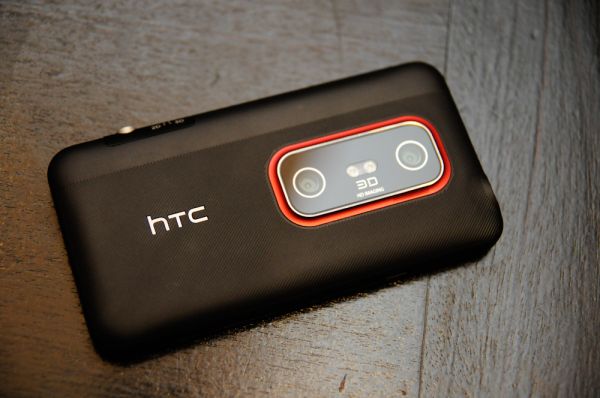

 Quote
Quote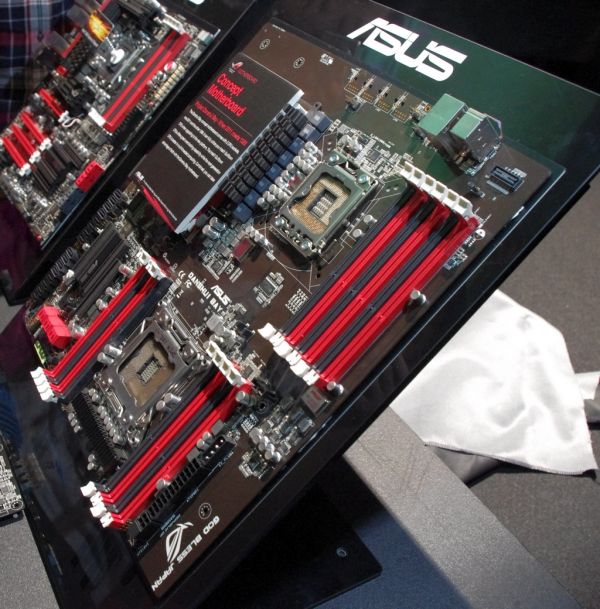
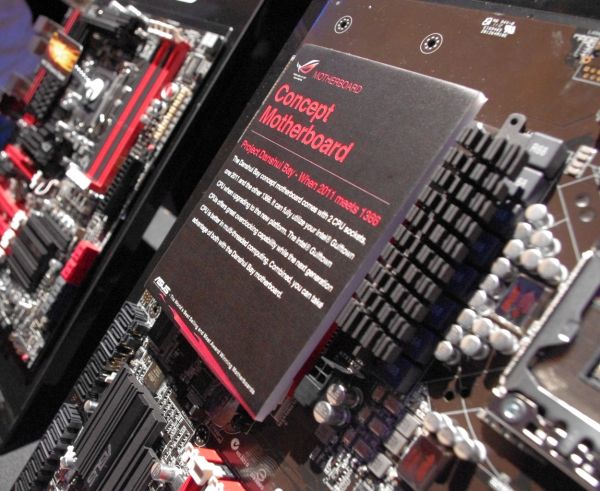
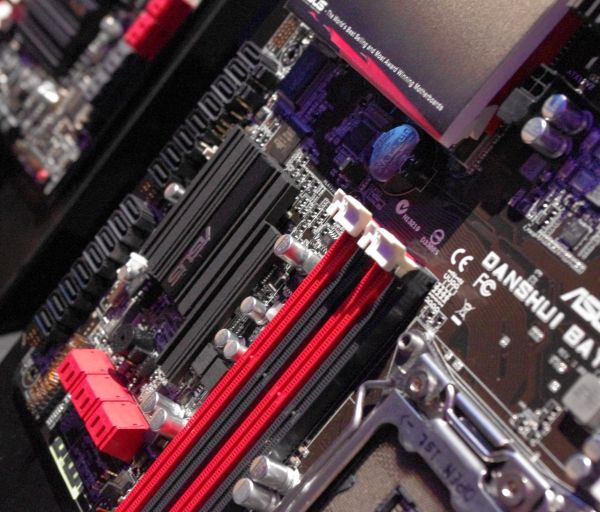
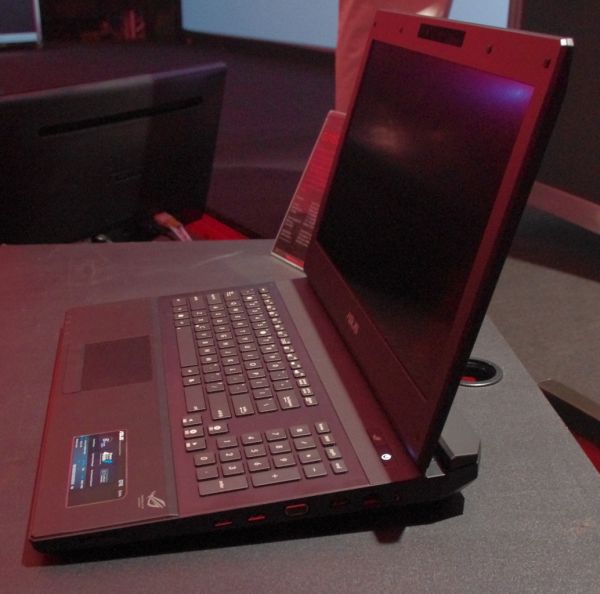
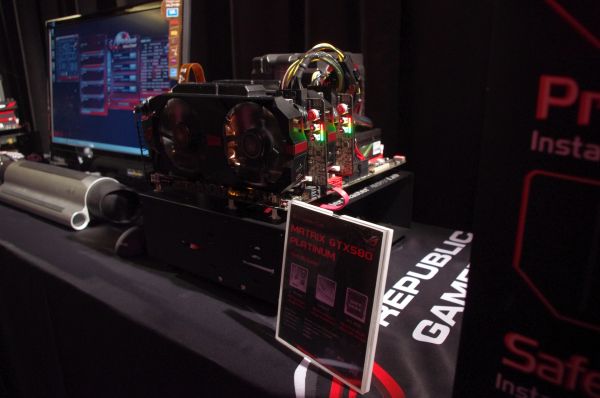
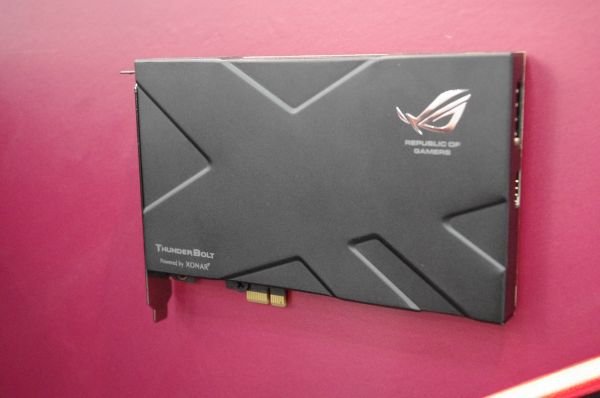







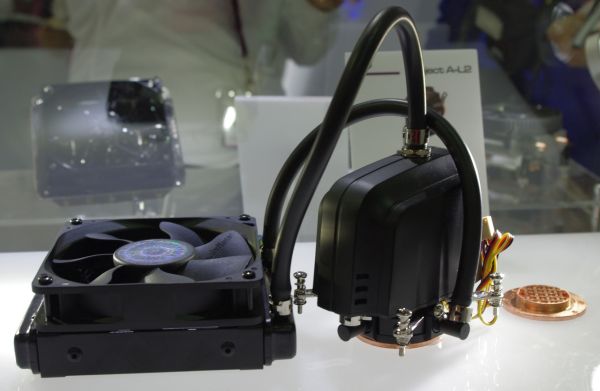



















Bookmarks